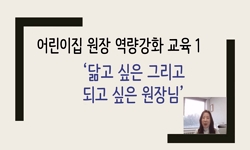This researcher examined the executives of seowon in Korea and China through cross validation on Sosu Seowon, Korea’s first seowon, and Bailudong Seowon in China which is one of the exemplary seowon in East Asia. The general difference in the execut...
http://chineseinput.net/에서 pinyin(병음)방식으로 중국어를 변환할 수 있습니다.
변환된 중국어를 복사하여 사용하시면 됩니다.
- 中文 을 입력하시려면 zhongwen을 입력하시고 space를누르시면됩니다.
- 北京 을 입력하시려면 beijing을 입력하시고 space를 누르시면 됩니다.

韓・中서원의 院任 비교 연구-한국 소수서원과 중국 백록동서원을 중심으로 = A Comparative Study on the Executives of Seowon in Korea and China-Focused on Sosu Seowon in Korea and Bailudong Seowon in China
한글로보기https://www.riss.kr/link?id=A108193656
-
저자
채광수 (영남대학교 민족문화연구소)

- 발행기관
- 학술지명
- 권호사항
-
발행연도
2022
-
작성언어
Korean
-
주제어
한국서원 ; 중국서원 ; 원임 ; 원장 ; 유사 ; Korean seowon ; Chinese seowon ; executives ; director ; yusa
-
등재정보
KCI등재
-
자료형태
학술저널
-
수록면
7-42(36쪽)
-
KCI 피인용횟수
0
- 제공처
-
0
상세조회 -
0
다운로드
부가정보
다국어 초록 (Multilingual Abstract)
This researcher examined the executives of seowon in Korea and China through cross validation on Sosu Seowon, Korea’s first seowon, and Bailudong Seowon in China which is one of the exemplary seowon in East Asia.
The general difference in the executives is that Korean seowon appointed men of repute in the village voluntarily while the seowon was operated mostly with the system of a director-(jangui)-yusa. On the other hand, Chinese seowon were operated by dividing the executives for education and administration. Also, the director was appointed as one of the local officials or an invited great scholar, and it was influenced by the government largely.
In addition, Chinese seowon had a more subdivided and larger organization about the executives than Korean ones. However, autonomy was guaranteed much more in Korean seowon than in Chinese ones which were influenced by the government strongly.
The following is a comparison between Sosu Seowon and Bailudong Seowon. First of all, in Sosu Seowon that pursued the organization of a director-yusa, 657 directors served for five months on average from its foundation to 1900. They were mostly the enrollees of it, and the cases of those who served as the director twice or more reached up to 225, and they served as few as twice and as many as seven times. The bylaws stipulate the qualifications for being one of the executives among those who passed Mungwan (文官) and Sama (司馬), but more than half of them were Confucian scholars. Meanwhile, many of them were the figu res who lived in the villages near the seowon, and it was operated exclu sively by some Seonggwan (姓貫).
From the mid- or late 18th century, prestigious men from outside or local officials in service were appointed as the director in order to adhere to governmental authority. About yusa, permanent yusa was there while temporary yusa were selected from time to time, too, to take charge of the duties.
Concerning Bailudong Seowon, for Yeosan-gukhak in the Tang Dynasty, the master of Gugyeong (九經) in Gukjagam became Dongju in charge of teaching with a goal of edu cation to cu ltivate persons of ability then. In the Northern Sung Dynasty when the seowon was restored, it took on characteristics as a national school according to the prevailing trend of the time. The identity and characteristics of Bailudong Seowon were established by Chu-tzu in the Sou thern Sung Dynasty. He pu t himself in the position of the first Dongju and recruited students for teaching and also suggested the direction that the seowon should pursue, for instance, Dangjang (堂長), inviting noted scholars, or supervising the lectures. The most noteworthy part about the Ming Dynasty is that Dongju who had passed Gwageo formed up to 90%. This was a phenomenon in response to the trend of seowon becoming bureaucratic due to the government’s control over education. Since teaching in the seowon during the Qing Dynasty took ‘Gwageo Gongmyeong’ as its main principle, the court dispatched a person suitable for this condition as Dongju.
국문 초록 (Abstract)
이 글은 韓・中서원의 院任을 한국 최초의 서원 소수서원과 동아시아 서원의 모범 중국 백록동서원을 교차 검증한 것이다. 원임의 일반적인 차이점은 먼저 한국서원은 향촌 내 명망가를 자...
이 글은 韓・中서원의 院任을 한국 최초의 서원 소수서원과 동아시아 서원의 모범 중국 백록동서원을 교차 검증한 것이다.
원임의 일반적인 차이점은 먼저 한국서원은 향촌 내 명망가를 자율적으로 선임 하되, 주로 원장-(장의)-유사 체제로 서원을 운영했다. 반면 중국서원은 교육과 행정을 담당하는 원임으로 구분하여 운영했고, 원장은 지방 관료 또는 대학자 초빙 등의 형태로 이루어졌는데 官의 영향력이 크게 작용했다. 또 중국서원이 한국서원 보다 원임의 직제가 보다 세분되어 있으며, 조직 규모가 더 컸다. 다만 한국서원은 관의 영향력이 강한 중국서원에 비해 자율성이 크게 보장되었다.
다음은 소수서원과 백록동서원을 비교해 살펴보았다. 우선 원장-유사 직제를 지향한 소수서원은 창건부터 1900년까지 657명의 원장은 평균 5개월씩 재임했 다. 이들은 주로 입원생 출신들로 2회 이상 원장을 중임한 자가 무려 225회에 달했고, 적게는 2회 많게는 7회나 역임하였다. 규약에는 文官과 司馬 합격자 중에서 원임의 자격을 명시하고 있으나 실제 유학 신분의 비율이 절반이 넘었다. 한편 이들은 주로 서원 인근 고을에 거주한 인사들이 많은 가운데, 일부 姓貫들에 의해 배타적으로 운영되었다. 18세 중・후반부터는 외부 명망가, 현직 지방관을 원장으로 삼아 官權과 밀착했다. 유사는 상시 유사를 두면서 서원의 필요에 따라 임시유 사를 수시로 선발하여 일을 담당하게 하였다.
백록동서원은 唐代 여산국학은 국자감 九經박사가 동주가 되어 교수를 관장하 며, 과거 인재 양성에 교육 목적을 두었다. 서원이 복원되는 북송 대에는 당대 보편적인 흐름에 따라 관학적 성격을 띠었다. 남송 대 주자에 의해 백록동서원의 정체성과 특징이 형성된다. 그는 스스로 초대 동주에 올라 원생을 모집해 강학한 것을 비롯해 堂長과 유명학자 초빙, 강학 업무 관장 등 서원의 지향할 방향성을 제시해 주었다. 명대는 과거 출신 동주가 무려 90%를 차지하고 있는 점이 가장 주목 되는 부분이었다. 이는 조정의 교육 통제에 따른 서원의 관학화 흐름에 조응한 현상이었다. 청대 서원의 강학 성격은 ‘과거 공명’을 주요 기조로 삼았기 때문에 조정 에서는 이 조건에 적합한 인사를 동주에 파견했다.
참고문헌 (Reference)
1 "列邑院宇事蹟"
2 정순목, "한국서원 교육제도연구" 1979
3 陳聯, "중국 휘주와 한국 영남지역 서원교육 비교연구" 5 : 2006
4 주희, "주자대전 4" 2010
5 이수환, "조선후기 서원연구" 일조각 2001
6 우인수, "조선후기 도산서원 원장의 구성과 그 특징" 퇴계연구소 (53) : 85-134, 2013
7 이병훈, "조선후기 경주 옥산서원의 운영 양상과 위상 변화 연구" 영남대학교 2018
8 이수환, "안동과 휘주의 서원교육 비교연구" 5 : 2006
9 이존산, "송명이학에 있어서 서원의 의의" 11 : 2012
10 안승준, "소수서원・병산서원" 한국학중앙연구원출판부 2019
1 "列邑院宇事蹟"
2 정순목, "한국서원 교육제도연구" 1979
3 陳聯, "중국 휘주와 한국 영남지역 서원교육 비교연구" 5 : 2006
4 주희, "주자대전 4" 2010
5 이수환, "조선후기 서원연구" 일조각 2001
6 우인수, "조선후기 도산서원 원장의 구성과 그 특징" 퇴계연구소 (53) : 85-134, 2013
7 이병훈, "조선후기 경주 옥산서원의 운영 양상과 위상 변화 연구" 영남대학교 2018
8 이수환, "안동과 휘주의 서원교육 비교연구" 5 : 2006
9 이존산, "송명이학에 있어서 서원의 의의" 11 : 2012
10 안승준, "소수서원・병산서원" 한국학중앙연구원출판부 2019
11 "소수서원 任事錄"
12 "鹽城縣志"
13 "高安縣志"
14 정만조, "韓國 書院의 歷史" 한국학연구소 29 : 1-26, 2007
15 "重建貫道橋記"
16 "進賢縣志"
17 "通許縣志"
18 "贛州府志"
19 "萬曆泰州志"
20 전용우, "華陽書院과 萬東廟에 대한 一 硏究" 18 : 1990
21 "良鄕縣誌"
22 송정숙, "紹修書院 任事錄 연구" 한국서지학회 (38) : 103-127, 2007
23 "竹溪志"
24 "福安縣志"
25 "瞿九恩傳"
26 範慧嫻, "白鹿洞書院의 성립과정과 조선의 서원-주희의 서원관을 중심으로" 한국학중앙연구원 2015
27 "白鹿洞書院志"
28 "濟源縣志"
29 "湖廣通志"
30 "海東雜錄"
31 "永樂大典"
32 "永安縣志"
33 "永嘉縣志"
34 "武城縣志"
35 "武城書院誌"
36 "棗陽縣志"
37 이수환, "朝鮮朝 嶺南과 淸代 山東의 書院 비교연구 -人的組織과 經濟的 기반을 중심으로-" 민족문화연구소 (46) : 225-246, 2010
38 김자운, "朝鮮時代 紹修書院 講學 硏究" 한국학중앙연구원 한국학대학원 2014
39 葉夢晨, "明淸時期白鹿洞書院洞主考論" 江西師範大學 2020
40 "明儒言行錄"
41 "新餘縣志"
42 "徽州府志"
43 "建昌府志"
44 "康熙新建縣誌"
45 孫彦民, "宋代書院制度之硏究"
46 "四書人物考"
47 "嘉昆山縣志"
48 "同治嵊縣誌"
49 "南康府志"
50 "南安府志"
51 李才棟, "北宋時期白鹿洞書院規模征實" 2005
52 "伊山院規"
53 임근실, "16세기 한중 서원지의 지식사적 의미" 민족문화연구소 (79) : 675-714, 2021
동일학술지(권/호) 다른 논문
-
제향 인물 변천을 통해 본중국 서원의 사상적 특징-강서(江西) 일대 서원을 중심으로
- 한국서원학회
- 배다빈
- 2022
- KCI등재
-
- 한국서원학회
- 정병석
- 2022
- KCI등재
-
19세기 韓中서원 자료를 통해 본서원의 출입과 그 목적-慶州 玉山書院과 廣州 廣雅書院을 중심으로-
- 한국서원학회
- 이병훈
- 2022
- KCI등재
-
- 한국서원학회
- 이우진
- 2022
- KCI등재




 KCI
KCI KISS
KISS







